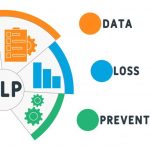This article explores important features of Data Loss Prevention systems and their role in protecting sensitive data from unauthorized access and breaches. It emphasizes how DLP helps keep an organization's security and compliance in check, making it an essential read for anyone aiming to enhance their information security measures. Data Loss Prevention (DLP) is a set of tools … [Read more...] about Understanding Critical Aspects of Using Data Loss Prevention Systems
Cybersecurity
Cybersecurity is the practice of protecting electronic information by mitigating information risks and vulnerabilities. Learn the basics of cybersecurity today.
AI-Powered Encryption: A New Era in Cybersecurity
The integration of artificial intelligence (AI) in cybersecurity has witnessed a significant upsurge in recent years, marking a new era in the battle against cyber threats. With the rapid evolution of malicious tactics and the increasing complexity of cyber attacks, traditional security measures have proven to be inadequate in safeguarding critical data and systems. This has … [Read more...] about AI-Powered Encryption: A New Era in Cybersecurity
From Crisis to Control: Mastering IT Incident Response and Data Recovery
In the fast-paced world of IT, incidents and data disasters are not just a possibility but an inevitability. The ability to respond effectively in times of crisis can mean the difference between minimal disruption and catastrophic failure. In this article, we will explore the crucial strategies and tools necessary to master IT incident response and data recovery. From … [Read more...] about From Crisis to Control: Mastering IT Incident Response and Data Recovery
Understanding the New SEC Rules for Disclosing Cybersecurity Incidents
In the ever-evolving landscape of cybersecurity, staying abreast of regulatory changes is paramount. The Securities and Exchange Commission (SEC) has recently introduced new rules governing the disclosure of cybersecurity incidents. This article delves into the intricacies of these regulations, shedding light on the critical aspects that companies need to comprehend and … [Read more...] about Understanding the New SEC Rules for Disclosing Cybersecurity Incidents
Navigating the Modern Realm of Data Protection with DSPM Solutions
Data Security Posture Management (DSPM) is the management of your cloud-hosted data to protect it from security risks and monitor it. This helps businesses understand what part of the data is sensitive, hence more prone to attacks, so that they can take appropriate measures to reduce the risk of unauthorized access. In the past, data security was primarily focused on protecting … [Read more...] about Navigating the Modern Realm of Data Protection with DSPM Solutions
What is cybersecurity?
Cybersecurity refers to protecting computer networks and systems from unauthorized access or attack. Cybersecurity analytics is the process of using data and analytics to identify, understand, and prevent cybersecurity threats. Want to learn more about cybersecurity? Datafloq has courses available. Contact us to get started.
What does cybersecurity do?
Cybersecurity analysts use data mining, machine learning, and other techniques to identify patterns that could indicate a cybersecurity threat. They then work to understand how the threat could be used to attack a system and finally work to prevent it from being realized. Cybersecurity is critical to any organization’s IT infrastructure, and businesses need to protect their data systems from cyber threats.
Why is cybersecurity important?
By investing in cybersecurity, businesses and individuals can safeguard their information from attacks by hackers and other malicious actors. In addition, cybersecurity can help to prevent identity theft, protect sensitive data, and ensure the confidentiality of online communications. As the world becomes more reliant on technology, cybersecurity will only become more important in the future.
How does cybersecurity work?
To put it simply, cybersecurity is all about identifying potential threats and then taking steps to neutralize them. This can be done through firewalls and encryption, making it more difficult for attackers to gain access to a system. And it also involves training users on how to spot a phishing email, so they don’t fall victim to an attack.
What are cybersecurity threats?
Cybersecurity threats can come in many forms, ranging from phishing attacks and viruses to malware and ransomware. While some threats are more serious than others, all can potentially lead to the loss of sensitive data or financial damages. Businesses and organizations of all sizes need to be aware of the latest cybersecurity threats and take steps to protect themselves.
How does cybersecurity affect business?
In today’s increasingly connected world, cybersecurity is more important than ever for businesses of all sizes. A security breach can lead to the loss of confidential data, customers, and revenue. In some cases, it can even result in legal liability.
As a result, businesses must protect themselves from cyber threats. This includes investing in security software and training employees on best practices for keeping data safe. Businesses can minimize the risk of suffering damaging cybersecurity incidents by taking these measures.
How does digital access impact various areas of cybersecurity?
Digital access has impacted various areas of cybersecurity in a few ways. One way is that organizations are now more aware of the importance of data security and have increased their focus on protecting their data. Additionally, digital access has allowed for the development of new technologies and organizations dedicated to improving cybersecurity.
Finally, digital access has made it easier for individuals to access cybersecurity information and learn about new threats. As a result, digital access has positively impacted cybersecurity by increasing awareness, developing new technologies, and making it easier to learn about cybersecurity threats.







